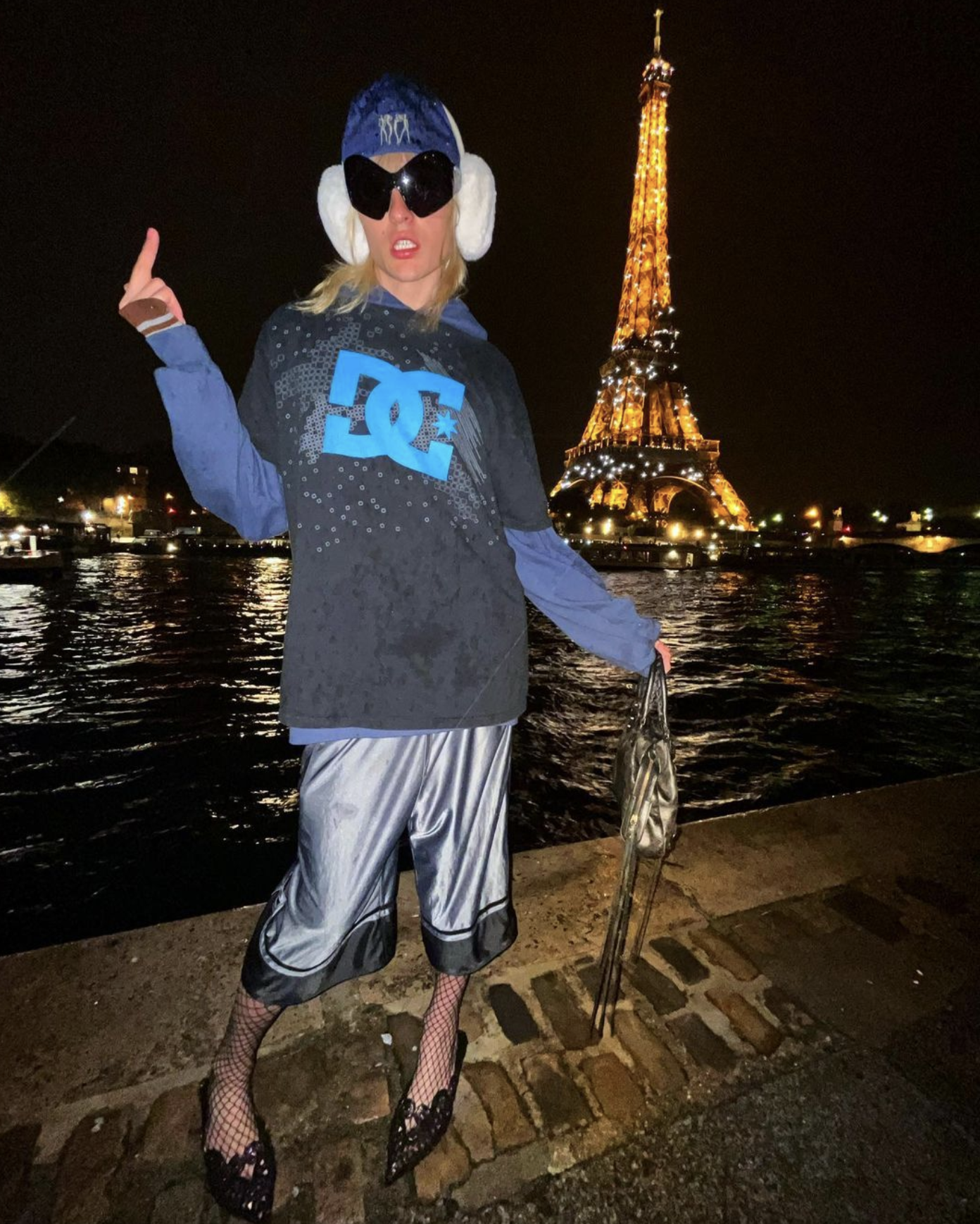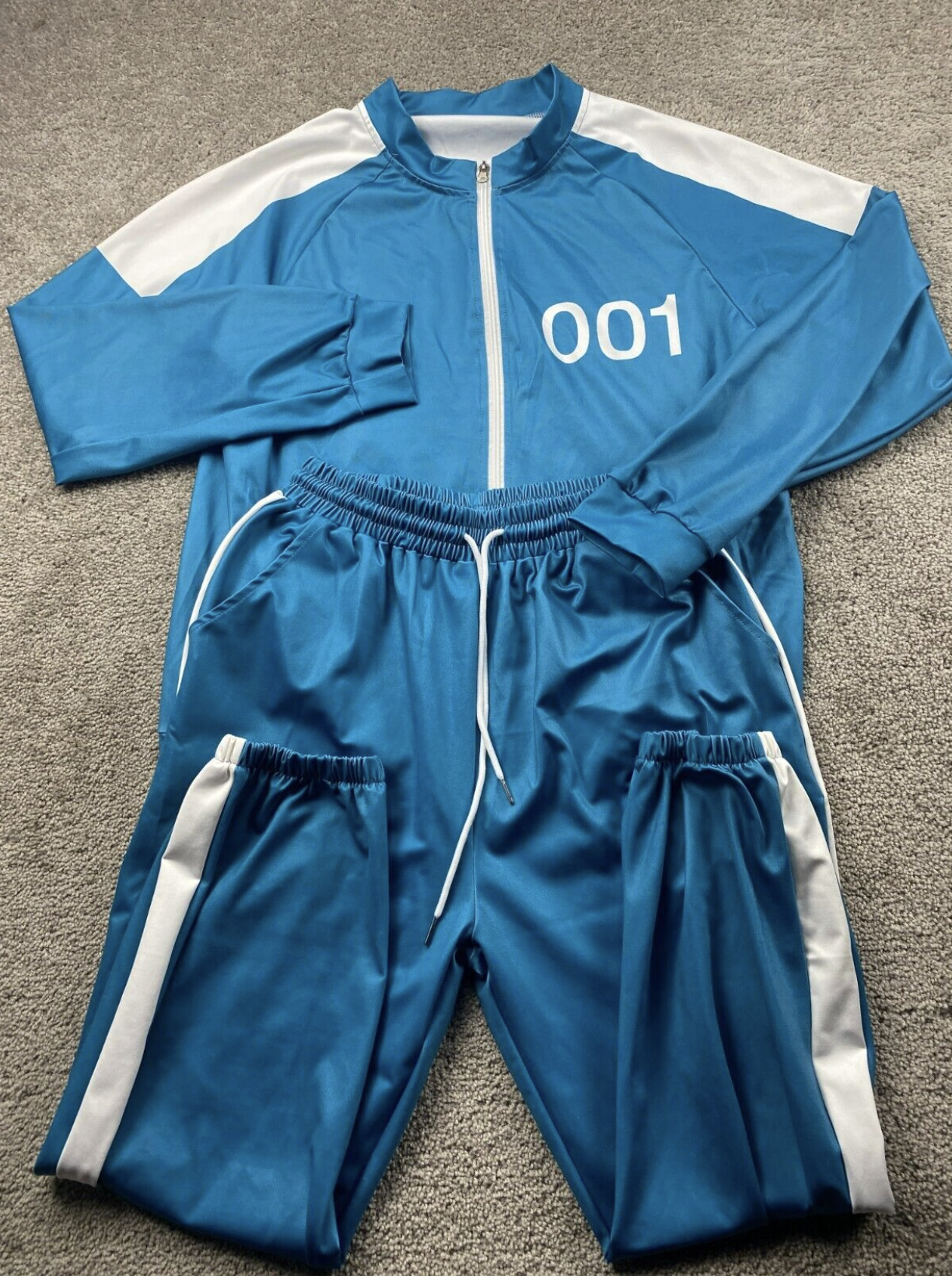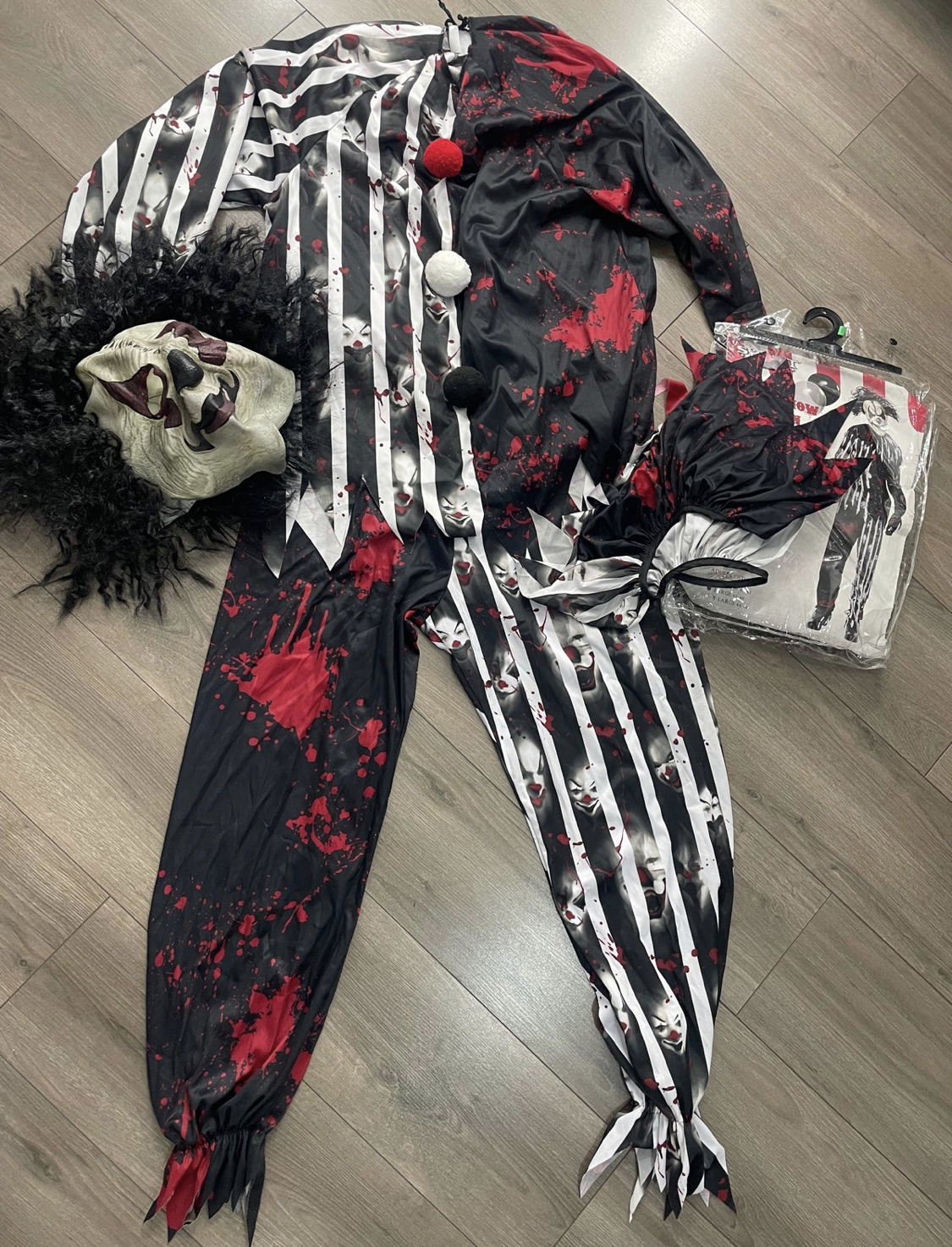May 2022
The “Blovad Effect,” Camouflage-Core And What It Means For Post-Corny Fashion
When Memes Become Nostalgic, The Fashion World Follows
(as seen in Do Not Research)

Who Is Luke Blovad On TikTok?
Picture this: a professional skater ditching it all to wiggle in boys clothes online for likes. Watching him strut in slow-motion to nightcore remixes on TikTok highlights how fashion and online persona have melded into the need to be a walking thumbnail. The cyclical nature of nostalgia in fashion has been been accelerated by Luke Blovad but, honestly, it’s just a symptom of our post-cliché world.
The oversaturation and overconsumption of images has been embedded into a generation that doesn’t really care about the consequences because (well) why should they? Of course, for some people, social media is a space that’s harmful. These people, however, have always existed. They’re a constant. With every generation that’s been the test subject for new mass media, there are always people who try it and drop it. Although they might circle back, they usually drop it again. Basically, the people who opted out of television would do (or did) the same thing with Instagram.
Social media is definitely the most life-encompassing mass media thus far but, as stated, it’s not only harmful. For many people, it’s a space for creativity, growth and connection. Without it, many people would not be who they are today – a version of themselves that they enjoy. The internet has inherently shaped many aspects of their interests and personality, as the world always does with everyone on a sort of cosmic level – some more than others, of course.
But as algorithms get smarter, they can choose how they shape people. This has been known for years at this point, that AI and humans are becoming a self-sustaining hivemind. The internet has affected all forms of human expression it seems. Take literature for example; the Downtown Manhattan, schizo-lit scene is directly inspired by 4chan threads, Tumblr e–girls and Instagram shitposters. Whether this influence is for the better or the worse really just depends if one is adverse to change or not.

As influencers and micro-influencers alike continue to post selfies and “fit pics,” the fashion world appears to be evolving too. For young people constantly involved in the production and consumption of images, people’s personal styles have become increasingly easy to exploit or mimic. With many parallel, niche subcultures isolated and amplified due to algorithms strategically promoting them or hiding them, each one festers and becomes extreme as one person tries to out-do the next. Inherently, this has led to some pretty niche styles. In the end though, they all boil down to a defining style, one person, whose existence was inevitable and feels obvious. By the time the style does exist, the aesthetic feels like it was always there.
This stepping-stone process is inherent to the cyclical nature of fashion. If every generation has “cool kids,” they’re the ones sitting on top of the culture, looking down at all the people who are still cycling through an aesthetic that they’ve already mastered and abandoned. This dramatic irony experienced by them is a power play only they’re aware of. A lot of this coolness depends on the anticipation of what piece of nostalgia will be most potent for exploitation next. When people picture an “alt” kid in their head (of any generation) they generally associate them with dressing nostalgically.
In runway fashion, the textures, fabrics and shapes that designers curate every year have been built on the sights, symbols and feelings of the designer’s wolrdview history (what they’ve absorbed throughout their life). In contrast, the everyday “cool kid,” who can’t afford designer, only thrifts, and unknowingly researches and harvests motifs accessible to them in real-world visuals in the same way as the paid designer, in order to be “ahead of the pack.” That's why, nowadays, every thrift store is deprived of JNCO jeans becauces 2000s-core was inevitable in the 2010s.

But if JNCO, Pepe, Abercrombie and any other brand worn in Skins have become “alternative” in the late 2010s, what does that mean for the 2020s going forward? With kids entering college every semester having been more and more born into social media exposure, what nostalgic motifs will ring true for them?
Enter Luke Blovad, a TikTok creator known for his eccentric style which exploits recent nostalgia. He essentially dresses like a video game-obsessed middle schooler from the 2010s. Just imagine, in your head, if one of the kids who does Fortnite dances at the mall food court got a boob job, tramp stamp and found out he was the long-lost son of Linsey Lohan. This all culminates into Blovad’s aesthetic, which involves rocking a “SpongeBob” crop-top to flaunt a femboy mid-drift.
When he started posting content to the platform in late July 2021, he started off in front of a Boost Mobile store, dancing and lip-syncing to a Ke$ha song while wearing an, “I’m Pickle Rick,” t-shirt. In relation to memes, this reads as post-ironic. He knows he’s being tongue-in-cheek by subverting motifs that are recently nostalgic. But even though it’s post-ironic, it’s not necessarily post-cliché.
For example, have you ever watched an episode of Seinfeld and heard a joke that you thought your dad came up with? This happens to more people than you’d think. Boomers and Gen Xers just didn’t have as many nuanced forms of comedic and poignant discourse to regurgatate as widely held truths as we do today. They’re widely held comedic truth was Seinfeld and many of them embedded its social cues and norms into their daily lives. They didn’t follow meme pages or have an algortighm specifically catered to them. What they found cringe and what they didn’t came from Seinfeld, one of the first forms of pop culture media that aggressively outlined clichés to be ridiculed.
In a post-Seinfeld world, so many clichés have been brought to light and shunned. The internet has only accelerated this process. As a culture of media consumers, some of us are so intune with this cliché-to-cringe pipeline that we label things as corny before they’re even normal. Nowadays, “cool kids” can’t even be cool without embedding themselves in layers of ironic signifiers in order to subvert themselves.
Consider Blovad with this meme analysis in mind – is what he’s doing with fashion too “on the nose?” It can be argued that he’s accelerating the process of old clothes becoming new clothes (or nostalgic) by making very new clothes (like Fortnite clothes) seem old (or nostalgic), but on the contrary, he’s following the cyclical nostalgia pipeline too closely which has become a cliché in fashion itself – too obvious to subvert.
Let’s enter another “fashion head,” Walter Pearce, whose Instagram has recently showcased his subversion of camouflage-core. Pearce is one of those Downtown scenesters who emphasizes that he’s an “Upstate boy.” His subversion senses mimic this, as he dresses like a New Paltz townie, essentially “queering” traditional 2022 straight white rural America. Dressing like a Trump supporter but wearing clogs is what he’s going for, and to him, that’s the current aesthetic to subvert.

Culturally, Pearce (among other Dime Square people) are currently trying to subvert counter-liberal aesthetics which would accelerate the cultural subversion pipeline, one of these being Christianity, which to them, has been “out” for too long.
Another counter-liberal aesthic which is also so obviously so is “Theil bucks,” as in, money from conservative billionaire Peter Theil, who earned his money by making fake news memes to get Trump elected. His name has become synonymous with both accelerating the Downtown scene while simultaneous dienfrancising their grassroots-ness.
It’s true that they’ve adopted both these polar opposites of the general “liberal” perception which is widely held and thought to be known by the mainstream. In a way, the scene’s adoption of said extremes is a way for them to counteract the general consensus on who they (and Gen Z as a generation) are and what the current “epitome” of their culture, as in Dime Square, represents in the history of all young people “scenes.”
They’re basically trying to be untouchable, ungroundable, melding both extremes of the “Left vs. Right” cultural divide into one aesthetic that no one can place. From this, their rationalization of accepting “Theil bucks” becomes clear, that by not caring where the money comes from, while at the same time, knowing where the money comes from emits an opportunist and post-ironic capitalist aura that they believe is valid. Connected to this, Pearce’s camouflage-core and 2022 Christian signifiers also becomes clear, in that, he’s trying to subvert the modern “unsubvertable.”
Considering both Blovad’s mid-2010s, middle school-core and Pearce’s late 2010s, Upstate New York-core as well as his (and the entire scene’s) “queering” of Chirstianity and Conservative billionaire money, in a way, it’s all too obvious to subvert and to label as the “next step” in cutting edge fashion and aesthetics. As stated, there’s always been this nostalgia pipeline in fashion, however, in our post-cliché world, in which we label things as corny before they’re even normal, don’t we exist above basic rehashing of previously canceled aesthetics? Aren’t “Theil bucks,” Christianity and middle America-core “aesthetic modes” that the collective consciousness can step over and not subvert? These “aesthtics modes” do not need to be “queered” in order to satistfy this nostaligic fashion cycle. In fact, the idea of “queering” them at all by ironically adopting them is a cliché that needs to be (and is being) surpassed entirely by the more savvy. Blovad’s fashion and Pearce’s fashion is too on the nose, in that it relies on this obvious cyclical subversion, and in Pearce’s case, it also dangerously “queers” something that has no place to be.

However, if both Bloavd and Pearce’s nostlgic subversions are not the epitome of what “cool kid” fashion should be right now, then what’s next? The answer is definitely not wearing all black – a trope that many aging hipsters fall into in order to “stay relevant” by “tapping out” – and its not full embracing the 2000s, 1990s, 1980s and so on, because their vintage appeal could also be wearing.
This is the tricky gymnastics that comes into play when subversion needs subverting; when nostalgia becomes too obvious; and when people’s expectations are too garnered to. The solution is ultimately the eyeing of a new fabric, a new shape, a new pattern (etc.) that has always been there, brewing for years, and no one yet has even considered it as nostalgic. In fact, when it appears out of the ether, it doesn’t even seem fully nostalgic, but rather, recently weathered, like an apartment made with 2010s plastic-woodlike outings that has stains. This imagined clothing has never been in any commercials or a part of any movie wardrobes. When 50 people are asked to make a “mood board” of the last decade’s fasion, this aesthetic doesn’t appear on a single one of them but all the people know something like it. It could just be a hat, or a scarf or a necklace; just some little piece of the puzzle that’s at the bottom of the thrift store $5 bin.
In my opinion, I think it’s Halloween costumes; used Halloween costumes. Think about it for a sec, you get maybe six pieces for $30 and they’re all this weird, synthetic fabric with printed on designs that, often times, can’t violate copyright infringement so they’re all slightly off. The ideal ones are like costumes you haven’t even seen on Alibaba but they look like Alibaba, but instead, they were made in North America, like Canada, and distributed to a chain store you’ve never been to.


Not everyone should walk around in used Halloween costumes (and not everyone who does walk around in used Halloween costumes should do it all the time). However, in our post-cliché world, where stigmas from pop culture are anticipated before existing, in order to stay ahead of the aesthetic pack, one must fully commit to being truly ungroundable, especially from the subversion patterns that are already well-understood, embedded, and therefore, their own cliché.
click here to read this article in the May 2022 Meme Insider issue.





©owencarry.com